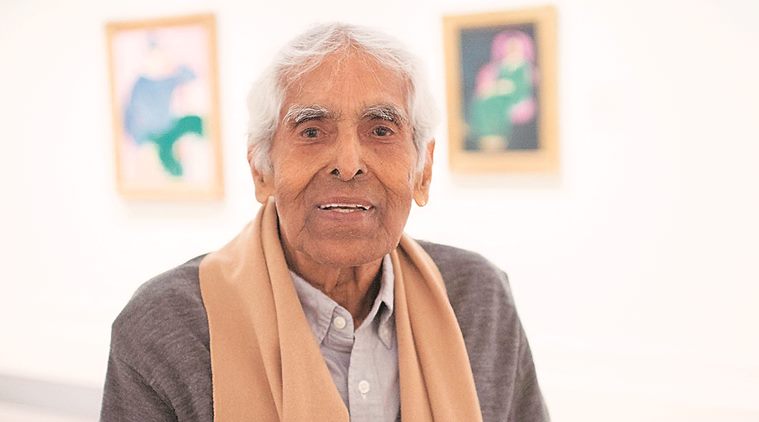A real guru, he always kept his links with India
The art fraternity remembers eminent sculptor and printmaker Krishna Reddy, who died in New York at the age of 93

Krishna Reddy has influenced thousands of art students.
As a young boy in Chittoor, he would often reproduce mythological paintings to fulfil his creative pursuits. While the imitations brought him attention in his immediate precinct, Krishna Reddy was to leave a mark in distant lands, becoming one of India’s most formidable artists, acclaimed for his experiments with a colour viscosity in printmaking and geometrical abstraction of nature. On August 22, he breathed his last in New York, his home for over 40 years now. He was 93. “With him, India has lost one of its most prominent printmakers,” says Anant Nikam, Head of Department of Graphic/Printmaking at Sir JJ School of Art, Mumbai. “I, too, selected my specialisation after interacting with him during a workshop in India in the ’80s,” adds Nikam, who was instrumental in organising a travelling exhibition of Reddy’s works in India in 2013.
Like Nikam, Reddy perhaps influenced thousands of art students. Having taught at several universities across the US — including the New York University, Ruskin College School of Fine Art and Drawing and University of Texas — Reddy is remembered as much for his own art practice as his engagements as a pedagogue. “A real guru and teacher, Krishna mentored generations in France and the US and always kept his links with India. He did many print workshops here with art students and taught many Indian artists in the influential art studio Atelier 17, including Zarina Hashmi. A gentle soul with sharp political beliefs, his roots combined Tagore and Gandhi with a good dose of the French left,” says photographer and curator Ram Rahman. He adds, “He also mentored me when I had just moved to New York and he got me to teach design at NYU. Always very generous with his time, guidance and even loans to young students, his loft was always filled with people of every continent and he made it a point to interact with black artists in the US. Bob Blackburn was one such artist he was extremely close to.”
Reddy’s initial learning ground was Santiniketan, where Nandalal Bose took him under his tutelage. “It was mastermoshai (Bose) who helped me discover the depths of nature,” Reddy reportedly stated in an interview. He wasn’t merely imitating what he saw but also discovering the organic forms in his surroundings, creating abstract images.
Bose also guided him on how to deal with human predicament. In 1943, when the Bengal famine broke out, Bose sent his students to volunteer for assistance. The experience led Reddy to produce a series of powerful ink drawings. It was the same force that was evident in the series ‘Demonstrators’ (1968), an outcome of racial discrimination that Reddy confronted in Paris in the ’60s.
While his artistic leanings were evident early on, it was miles away from home that he was to discover the language of printmaking. Through the ’50s, he moved across London, France and Italy, studying and working with the likes of Henry Moore, Ossip Zadkine and Mario Marini. Working with printmaker Stanley William Hayter at Atelier 17 in Paris, Reddy began to experiment with colour viscosity in printmaking that revolutionalised intaglio printing.
While his artistic leanings were evident early on, it was miles away from home that he was to discover the language of printmaking. Through the ’50s, he moved across London, France and Italy, studying and working with the likes of Henry Moore, Ossip Zadkine and Mario Marini. Working with printmaker Stanley William Hayter at Atelier 17 in Paris, Reddy began to experiment with colour viscosity in printmaking that revolutionalised intaglio printing.
“His unique vision was the startling combination of his pastoral nature studies from Santiniketan, with the darker cosmic view of French surrealism. His plate-making was sculptural, carved with styluses and tools into the copper,” says Rahman.
Exhibiting across the world, the Padma Shri-awardee kept returning home, to India, to conduct workshops and interact with the artist community, occasionally even showing his work in the country.
Exhibiting across the world, the Padma Shri-awardee kept returning home, to India, to conduct workshops and interact with the artist community, occasionally even showing his work in the country.
“He has inspired generations of artists and was willing to give without any expectation. We are planning a prayer meeting and hope to educate more people about his work. Unfortunately, his greatness is not known to many,” says Nikam.






















No hay comentarios:
Publicar un comentario